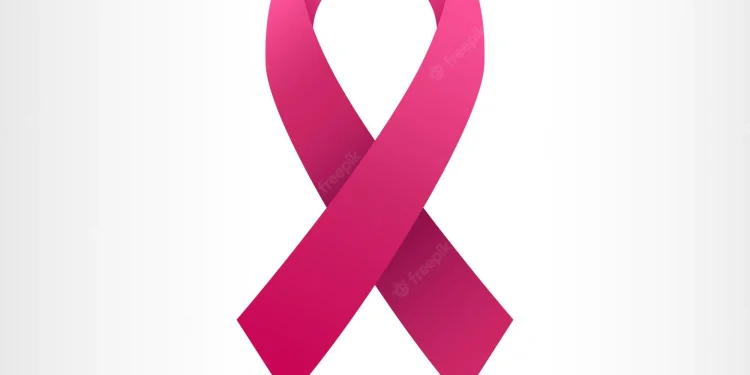The majority of women’s cancer deaths in Ghana can be attributed to breast cancer. Studies have found that a high percentage of Ghanaian women diagnosed with breast cancer do not survive the disease. Now, as October is international breast cancer awareness month, Ghana is trying to figure out what can be improved to overcome this issue.
This month is under the pink flag worldwide. In breast cancer awareness month, people are trying to shed light on the disease and draw attention to things that need improvement.
Breast cancer is the most common form of cancer affecting women all around the globe. Approximately 1.4 million new cases are registered every year. And sadly, the state of the country you live in affects your chances of getting sick as well as the outcome. Half of all women diagnosed with breast cancer live in low- and middle-income countries, also called LMICs. 58 percent of breast cancer deaths happen in these countries.
Ghana, also being a LMIC, deals with many breast cancer patients and deaths. There is no official registry for the number of diagnoses in Ghana, but there are expected to be 15.3 to 35 cases per 100.000 inhabitants. Although this may not sound like a lot, there is a high amount of not registered cases. Also, the number is expected to increase as the country’s population age rises and women more and more adopt western lifestyles.
Ghanaian women tend to be diagnosed with breast cancer at a much younger age than women in the US. This can be attributed to people usually dying earlier than in the states which causes the Ghanaian population to have a lower average age. In percentage, women in Ghana get breast cancer over a decade younger than American women. Also, at the time of the diagnosis, the cancer is already in a more advanced stage compared to the US. Most Ghanaian women are in stages III or IV when they finally get a diagnosis. This can have a drastic impact on their chances of survival. Statistics also show that patients in Ghana have larger tumors than those in the United States, and less tumors that are hormone positive.
Now, of course, the country is confronted with one important question: How is it possible that Ghanaian women’s cancer is already so advanced when they finally start their treatment?
The answer is that most women in Ghana decide to seek help eight to ten months after developing the first symptoms. In ten months, the cancer has time to spread exponentially. This reduces the chances of a cure drastically.
The reason for the affected persons getting medical help so late is as simple as it is sad: Many women do not have access to a medical institution with cancer care. Additionally, the stigma still surrounding breast cancer leads to women not being educated enough about the disease and therefore not knowing how to read the symptoms properly.
To make sure people are informed on how to deal with the disease, social media represents a crucial tool for education – especially for students and the younger population. Online, you can find information on how to check your breasts for symptoms of cancer. The “MammaCare” method of clinical breast examination, for instance, shows women step by step how to self-examine their body so they can be aware of the dangerous disease in time.
In addition to the lack of information, the Ghanaian health system deals with multiple grievances that have a negative effect on the diagnoses. For instance, there are currently no national breast cancer screening protocols in Ghana, and mammography or ultrasound machines are only partly available. That leads to further delays in diagnosis.
Not only do women in Ghana suffer from breast cancer more often and mostly go to a medical institution too late, but they also show a high death rate once diagnosed with the disease. A study in 2001 found that the five-year survival rate lies at 25.3 percent – a shocking number.
What makes it even harder for Ghana to improve this issue is the fact that there is very little data on breast cancer cases in the country. Biological factors might also play a role in the low survival rate – 82 percent of the Ghanaian breast cancer patients have been diagnosed with TNBC, a more dangerous form of the tumor. But all of those theories do not have enough supporting data which makes it so hard to find a solution. A solid data base could make way for thorough research on subject and therefore an improvement in cancer treatment.
Until then, social media is an important source of information: It can show people how to check your own breast for symptoms and come up with a solution in time. Education in schools and colleges, for instance in form of awareness campaigns, can support that. Women identifying their symptoms in time can save lives – thousands of them.







